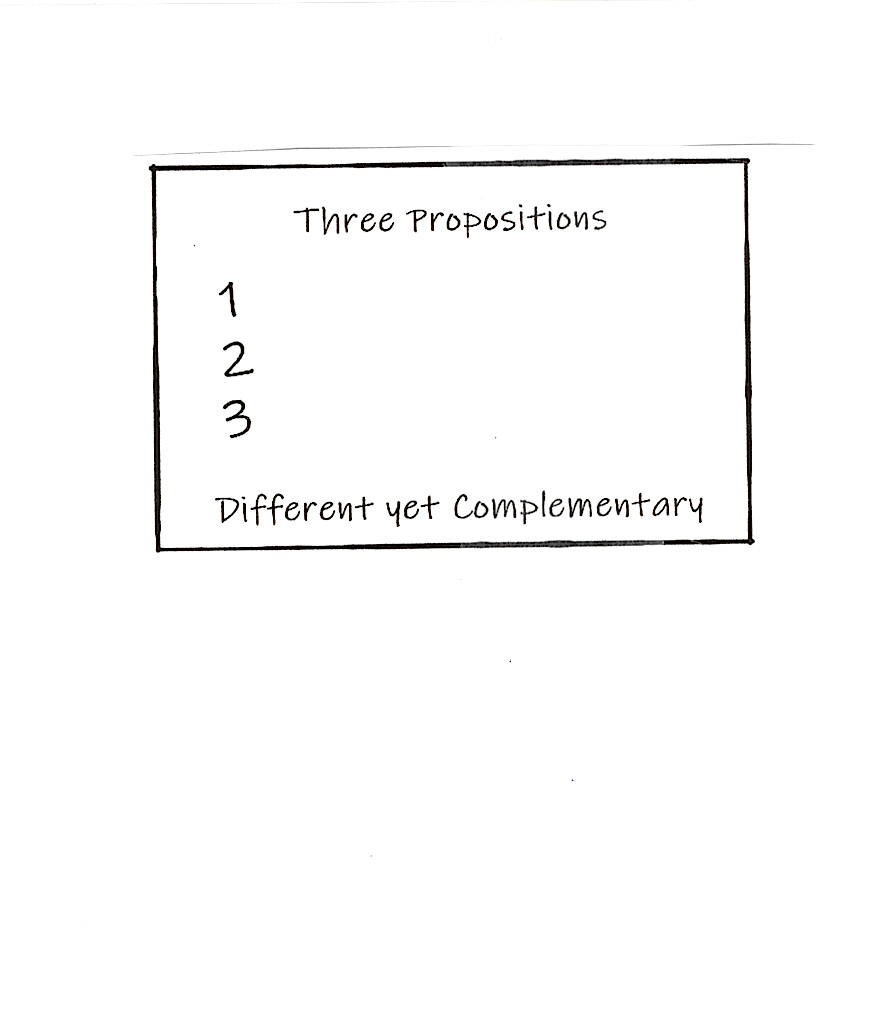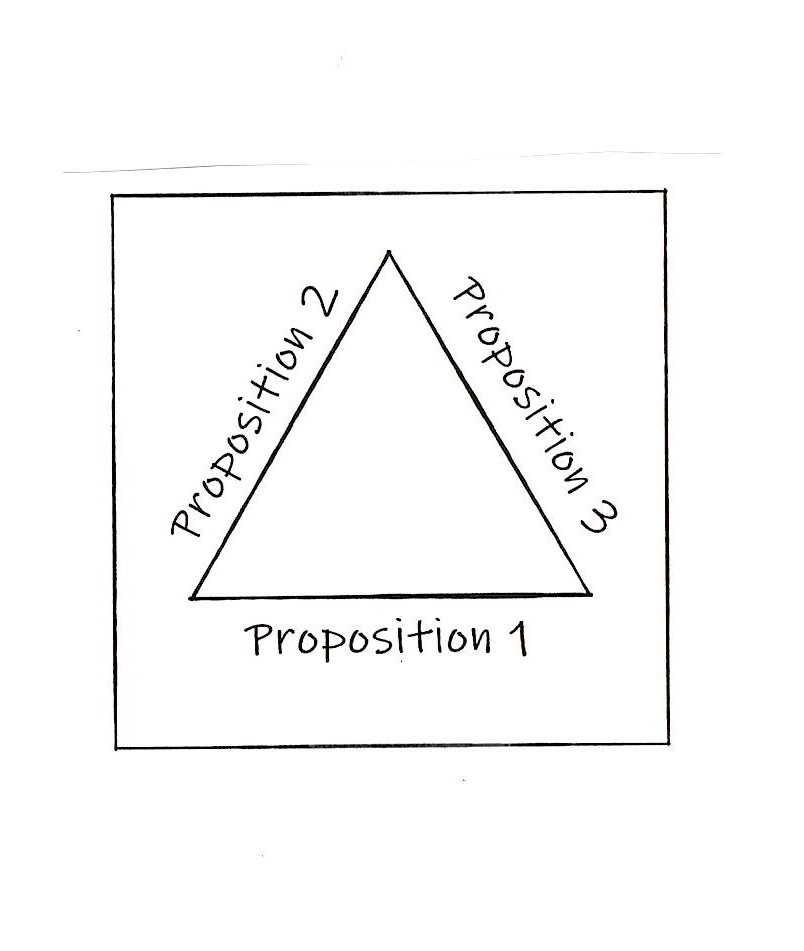

The best way to “tee up” the conversation about propositions might be to use the following scenario: The Guide: We are working to move this process from ideas to action plan. The next step in advancing the Seven Significant Facts is to derive from those facts a total of three propositions.
What’s a proposition? Propositions are not summaries of the facts. Propositions are not the “Top 3” of the Significant Seven. If we look at the list of significant facts, what do they, collectively, say about the problem or the issue we’re discussing?
These three observations need to be different and at the same time complementary. In the same way that 3 is the smallest number of sides that can enclose a space, or three is the smallest number of legs that can hold up a stool – what are the three things that make the facts more understandable, useful, or actionable?
Invite additional thinking-out-loud discussion until the team defines three statements to fill in the blanks on the proposition flipchart. When that’s completed, put it up on the wall along with its finished counterparts.
The next step in Thinking Whole begins with this visual:


















